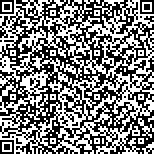下载中心
优秀审稿专家
优秀论文
相关链接
摘要

由于卫星微波成像仪频率的非保护性,微波成像仪资料受到相近频率的无线电信号干扰影响,主要干扰源于洋面反射的静止电视卫星信号。为提高微波成像仪资料的准确性,尤其是洋面资料的可用性,对电视卫星信号干扰的检测和特征分析尤为重要。中国风云3号C星(FY-3C)上搭载了微波成像仪。本文使用标准化主成分分析法来识别FY-3C微波成像仪的电视卫星干扰信号,并分析电视卫星信号干扰的主要空间特征。研究表明,FY-3C微波成像仪中心频率为10.65 GHz和18.7 GHz的4个低频通道受到卫星信号干扰。10.65 GHz通道在欧洲海域英吉利海峡和地中海西部希腊沿岸地区受到电视卫星信号干扰,并且干扰信号位置和强度与FY-3C卫星和欧洲静止电视卫星相对空间位置有关;18.7 GHz通道主要受到美国电视卫星的干扰,在北美东、西沿岸海域都存在干扰信号。FY-3C微波成像仪在中国海域不受电信号干扰影响,主要因为中国静止电视卫星频率与微波成像仪各通道频率不一样。
关键词:
风云3号C星(FY-3C) 微波成像仪 海洋 电视信号干扰 识别Observations of a satellite Microwave Radiation Imager (MWRI) are easily interfered by signals of active remote sensing because of their similar frequency. The primary source of interference over oceans is the reflected signal of geostationary television (TV) satellites by the ocean surface. The accurate detection of such interferences is largely important for the effective use of MWRI observations and an essential preprocessing step of the MWRI data onboard the FY-3C satellite.
A Normalized Principal Component Analysis Method (NPCA) is used to detect the TV Frequency Interference (TFI) signals over oceans. High correlations exist among the different MWRI channels, but the RFI signal eliminates these correlations. Hence, NPCA can detect the TFI signal by employing this aspect.
The TFI signals of the MWRI at 10.65 GHz horizontal polarization over oceans are distributed widely near the coastal areas of Europe, especially the English Channel and western parts of the Mediterranean Sea. The TFI signal definitively originates from the hot bird, and its intensity is related to the angle between the MWRI incidence and geostationary satellite TV signals reflection. The threshold of the TFI signals is defined to quantify the TFI intensity. The TFI signals at 18.7 GHz are observed over the offshore marine areas of North America. As expected, no RFI signal is detected near the coastal areas of China because the geostationary satellite TV frequency over China is different from those of MWRI channels.
The NPCA method can detect TFI signals over oceans. The distribution of TFI signals are in Europe at 10.65 GHz and North America at 18.7 GHz. The intensity of the TFI signals is completely related to the Glint angle. TFI signals evidently affect the result of the retrieval production. Correcting and eliminating TFI signals will be pursued in future studies. Clear brightness temperature data will also be adopted in retrieval production and data assimilation.

